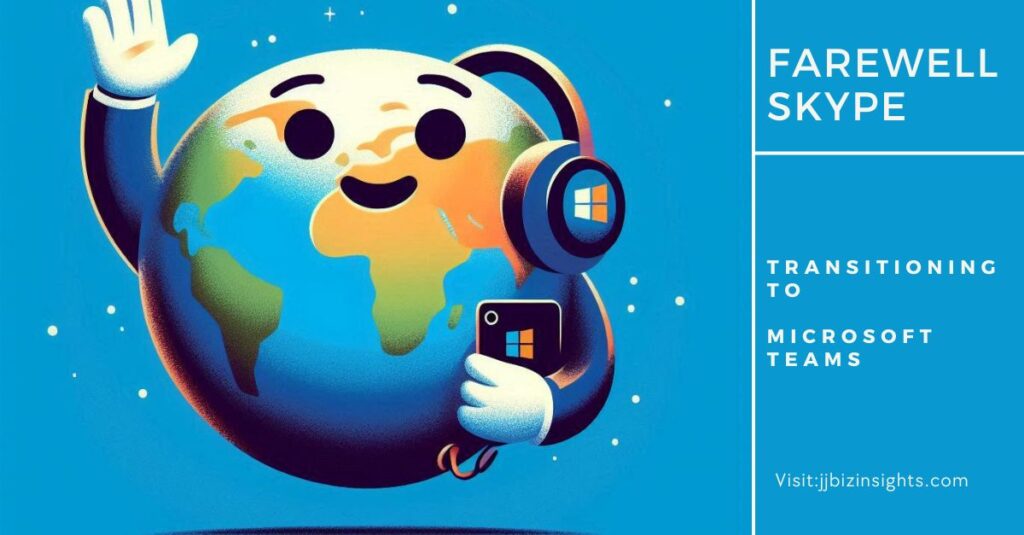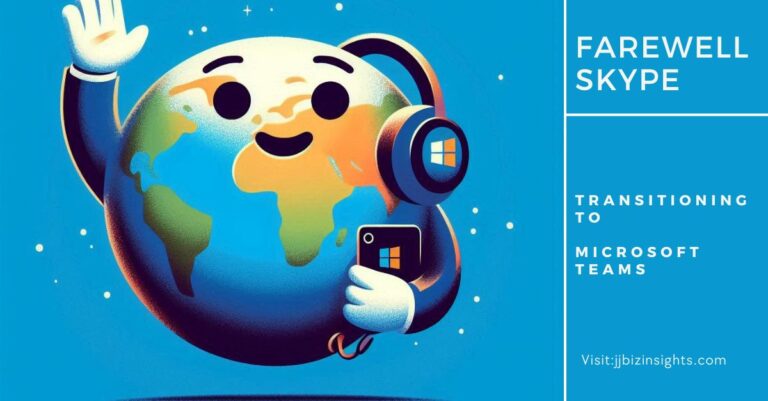
Farewell Skype
In a significant move, Microsoft has announced the closure of Skype, the pioneering video-calling service that revolutionized online communication. As of May 5, 2025, Skype will officially retire, making way for Microsoft Teams as the primary platform for video conferencing and team collaboration. This transition marks the end of an era and the beginning of a new chapter in digital communication.
The Legacy of Skype
Skype, founded in 2003 by a group of engineers in Estonia, quickly became a household name by enabling people to make voice and video calls over the internet. Acquired by Microsoft in 2011 for $8.5 billion, it played a crucial role in transforming how people connect online. It allowed users to bypass expensive international phone calls, making it a popular choice for both personal and professional communication.
Over the years, Skype introduced various features, including video calls, instant messaging, and file sharing, which made it a versatile tool for remote communication. However, with the rise of competing platforms like Zoom, Slack, and Microsoft Teams, It’s popularity began to wane.
Impact of Skype on Digital Communication
Skype has had a profound impact on digital communication since its inception in 2003. Here are some of the key ways it has influenced the landscape:
Democratizing Communication
Skype made it possible for people all over the world to connect through voice and video calls for free or at a low cost. This democratization of communication allowed people to stay in touch with family and friends across borders without the prohibitive costs of international phone calls.
Revolutionizing Business Communication
In the professional realm, Skype became a cornerstone for businesses, enabling remote work and virtual meetings long before it became commonplace. It facilitated global collaboration, allowing companies to maintain relationships with clients, partners, and employees across different time zones.
Pioneering Video Calling
It was one of the first platforms to popularize video calling, bringing face-to-face communication to the masses. This feature transformed personal and professional interactions, making it more engaging and effective than traditional phone calls or emails.
Integration with Other Platforms
Skype’s integration with various other services and platforms, including Microsoft Outlook and Facebook, allowed for seamless communication across different mediums. This interoperability set a precedent for future communication tools to offer integrated experiences.
Advancing Online Education through Skype
It played a significant role in the rise of online education by enabling virtual classrooms and tutoring sessions. Educators and students could connect in real-time, breaking down geographical barriers and making education more accessible.
Emergency Communication by Skype
It proved invaluable during crises, such as natural disasters or political unrest, where traditional communication lines were disrupted. It provided an alternative means for people to reach out to loved ones and for organizations to coordinate relief efforts.
User Interface and Experience Innovations
It’s user-friendly interface and continuous feature updates set standards for what users expected from communication apps. Features like instant messaging, file sharing, and group calls became essential components of modern communication platforms.
Cultural Impact of Skype
It’s influence extended beyond practical uses; it became a cultural phenomenon. The term “skyping” entered the lexicon, symbolizing a new era of connectivity. The platform was referenced in movies, TV shows, and other forms of media, highlighting its widespread adoption and significance.
Inspiring Future Technologies
It’s success inspired the development of numerous other communication tools and platforms. Its legacy can be seen in the features and functionalities of modern apps like Zoom, Microsoft Teams, and Google Meet.
In essence, Skype not only transformed how we communicate but also paved the way for future innovations in digital communication. Its impact is enduring, even as we transition to newer platforms like Microsoft Teams.
Why Microsoft is Shutting Down Skype
Microsoft’s decision to retire Skype is driven by its focus on streamlining its communication tools and enhancing user experience. Microsoft Teams, launched in 2017, has rapidly gained traction as a comprehensive platform for team collaboration, integrating chat, video conferencing, file sharing, and more. By consolidating its efforts on Teams, Microsoft aims to provide a unified and efficient communication solution for its users.
Transitioning from Skype to Microsoft Teams
For current Skype users, transitioning to Microsoft Teams is a straightforward process. Microsoft has ensured that users can seamlessly migrate their contacts, chats, and call history to Teams. Here’s a step-by-step guide to help you make the switch:
- Download Microsoft Teams: Visit the Microsoft Teams website and download the app on your preferred device.
- Sign In with Skype Credentials: Open the Teams app and sign in using your existing Skype credentials. This will automatically migrate your contacts and chat history to Teams.
- Explore Teams Features: Familiarize yourself with the various features of Teams, including channels, file sharing, and video conferencing. Teams offers a more robust and integrated experience compared to Skype.
- Export Skype Data: If you prefer to keep a backup of your Skype data, you can use the built-in export tool to download your chat history, contacts, and call logs. Visit the Skype settings and select the export option to save your data locally.
- Utilize Teams for Communication: Start using Teams for all your communication needs. Whether it’s for personal chats, team meetings, or collaborative projects, Teams provides a comprehensive platform to stay connected.
Benefits of Microsoft Teams
Microsoft Teams offers several advantages over Skype, making it a superior choice for modern communication:
- Integrated Collaboration: Teams combines chat, video conferencing, file sharing, and collaboration tools in one platform, enhancing productivity and teamwork.
- Seamless Integration with Microsoft 365: Teams integrates seamlessly with other Microsoft 365 apps like Word, Excel, and OneDrive, allowing for efficient workflow management.
- Enhanced Security: Teams provides robust security features, including data encryption and multi-factor authentication, ensuring the safety of your communications.
- Scalability: Whether you’re a small team or a large organization, Teams can scale to meet your needs, offering various plans and features to suit different requirements.
Conclusion
The closure of Skype marks the end of an iconic era in digital communication. However, the transition to Microsoft Teams opens up new possibilities for enhanced collaboration and connectivity. By following the steps outlined above, you can smoothly migrate to Teams and take advantage of its advanced features. Embrace the future of communication with Microsoft Teams and stay connected like never before.
For more information on the transition and to download Microsoft Teams, visit the official Microsoft Teams website.
What is Market Trends? 10 Trends That Will Power Your Growth in 2025





